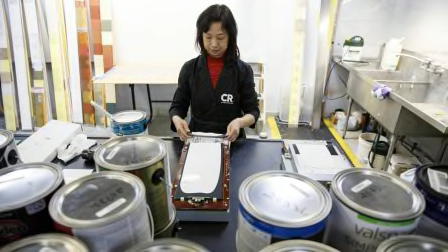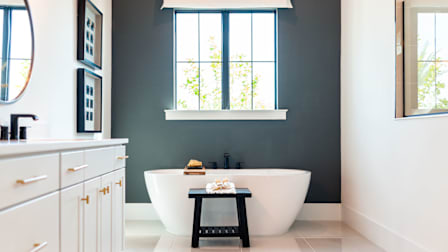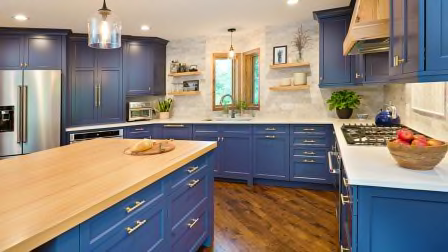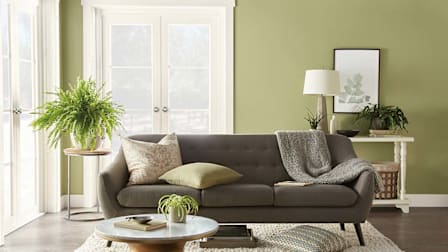Pick the Perfect Paint Finish for Every Room
Natural light and the room's typical foot traffic are just two things you should consider
When you shop through retailer links on our site, we may earn affiliate commissions. 100% of the fees we collect are used to support our nonprofit mission. Learn more.

Whether you’re readying your home for the market or just looking to refresh a tired space, your choice of interior paint is important, and it involves a few different considerations. You’ll want to select the right color, of course, but you should also consider how it interacts with the colors of the furniture and flooring, and the amount of natural and artificial light a room gets. Picking a paint that’s too shiny can reflect too much light, and one that’s too flat may appear dull.
A paint’s sheen, or finish, affects how the color appears, and that depends on whether it absorbs light or reflects it. In addition, for paint to hold up well over time, it has to be durable enough for the surface and the situation.
Below, you’ll find a breakdown of different paint sheens and where they work best in a house, plus the six best interior paints from CR’s tests that you can get in any sheen. A number of these paints have Greenguard Gold certification, meaning they emit lower levels of volatile organic compounds, or VOCs (particularly formaldehyde), than the industry standard. VOCs are chemicals that can easily become airborne and affect your health, according to the Environmental Protection Agency. Low levels of VOCs—manufacturers claim that some paints have “zero VOCs,” as you’ll see—are ideal for interior paint projects.
Flat and Matte
Flat paint has a nonreflective finish; matte is low luster. A paint brand usually offers one or the other. Both help hide imperfections on the surface. “But these finishes are the least resistant to stains,” says Rich Handel, the engineer who oversees CR’s tests of paints and stains. “The other finishes generally perform better.”
Best for: Ceilings, living rooms, bedrooms, and anywhere you don’t have to worry much about wear and tear or messy splatters.
Eggshell and Satin
For one level of sheen up from flat or matte, eggshell and satin are good choices. “Satin is slightly shinier, and both are easier to clean than flat or matte paint,” Handel says. You’ll find that some paint lines offer both eggshell and satin. These sheens tend to accentuate surface imperfections, so take the time to prep and get the walls as smooth as possible. Scrape away cracked or peeling paint with a metal putty knife. And use it to remove bumps, dried-on paint, and the raised edges around nail holes.
Best for: Family rooms, living rooms, bedrooms, and hallways. Satin, which is a little more hard-wearing than eggshell, works well in those rooms and also in kitchens, dining areas, children’s bedrooms, and bathrooms. Many satin finishes are tough enough to use on trim as well.
Semi-Gloss
With semi-gloss finishes, your walls will have a shiny look and really catch the light. Semi-gloss paints are also the toughest against wear and tear. “The most lustrous of this group, semi-gloss paints typically resist stains better than the other finishes, and they’re easy to clean,” Handel says. Just as with satin paints, you’ll want to make sure your walls are smooth and free of any surface debris before painting.
Best for: Trim, windows, and doors. If you like the shiny look, consider semi-gloss for a kid’s room, the kitchen, and bathrooms.
Best Interior Paints From CR's Tests
Here are six top paints from our tests, none of which require a primer. They appear here in alphabetical order.
Have you taken a shine to a sheen?
Tell us which one and why below.
How to Paint
Do you have some painting projects planned for your home? On the “Consumer 101” TV show, watch as host Jack Rico learns how to give walls the perfect coat.

































